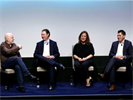Jo Madnani 14 Jul 2023 // 4:17PM GMT

Diversity. Equity. Inclusion…but not all diversity is equal and inclusive. Not all of it resonates with different groups as it is intended to. My stance on it as a marketing leader, a woman of color and a first-generation immigrant is different. I'd like to focus on an element of DE&I that is often overlooked: the intersectionality of diversity of thought, cultural conditioning, and patterns.
In other words, the ‘and’ in DE&I is the discovery is waiting to be brought to light.
Not all diversity is homogenous; there are outliers who don’t belong in a box that needs to be checked, nor can they be considered as a part of the majority or a minority. It’s like having an either/or choice: that can be psychologically polarizing, and is there a way to make that work?
First, moving from India to Florida and then to New York, my career trajectory is shaping up to be more of a jungle gym rather than a ladder. Punctuated with motherhood, these shifts warranted a massive life and work pivot. Through these ups and downs, my career and personal identity stretched and shrunk. To quote Brené Brown, these spaces were my “wilderness.”
In that wilderness was born the expansive mindset of the 'and'.
A case in point, being Asian American. Asian in America? Indian American?
I am a Gen X-er who started my advertising career with Ogilvy, India. At home, I saw gender inequality clear as day, called it out and defied it whenever possible. As I entered the professional world of advertising, blatant sexism was just any other Tuesday. There was strong female leadership, but not enough of it, and the imbalance of work in the household was and still is prevalent.
Fast forward to immigrating to the US in my mid-twenties, I observed that imbalances and inequity were present, but less pronounced. But I was faced with another quandary: I couldn’t relate to traditionalist immigrants (first and sometimes second generation) nor did I have a sensibility that was totally American. I had to navigate the limbo of “not enough” for many years.
The Pew Research Center’s Diverse Cultures and Shared Experiences Shape American Identities report shares some data that underscores how Asians navigate their identity. Per the report, America’s Asian population is at 23+ million and it’s fast growing and super-diverse. And yet, 60% say they use the blanket term Asian and are seen by others as a single group, despite their varied heritage and culture.
An iterative aspect of this research, In Their Own Words: Being Asian in America, captures the sentiments of 66 focus groups with 265 participants, each responding to “What does it mean to be you in America?” Respondents state it’s like having a “double identity”. Some say the stereotypical description doesn’t sit right with them and some would like their children to experience their heritage like they did.
While this research is based in America, and I zeroed on in one demographic, it applies to migration and its seismic effects on one’s identity. When I was younger, I felt I had to pick one culture, one identity over the other. Either I had to fit in or stand out. It never occurred to me that I could do both in balance... additively.
To me, diversity is the rich tapestry of our experiences that make us who we are and are as distinct as fingerprints. It’s these unique, meaningful inflection points that help shape cultural context in creativity that challenges limits.
There’s always more to see. Beyond the label, beyond the stereotype. Here’s to more intersection and connection and seeing the deeper dimension in diversity.


































.jpg)






.tmb-135x100.png)










